Info
Subfamily: Panicoideae
Genus etymology: Digitaria = "having fingers" [Latin] refering to the inflorescence structure
Species etymology: setigera = "bristle bearing [Latin] refering to the bristles present on the raceme axis of the type specimen
Photosynthetic type: C4 (warm season)
Nativity: naturalized - accidental
First recorded in Hawaiʻi:
Map

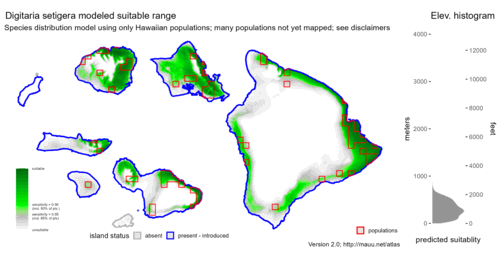
Inflorescence
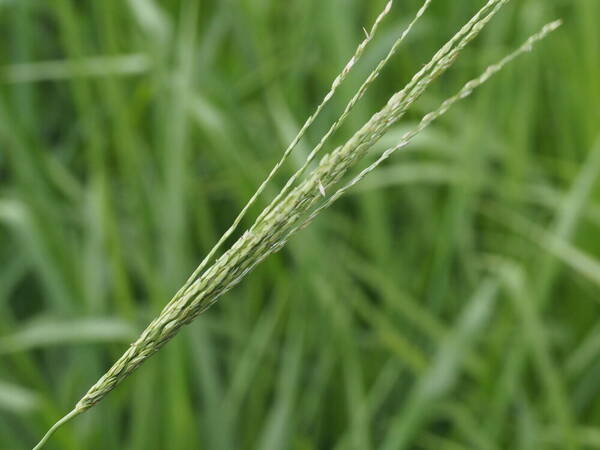
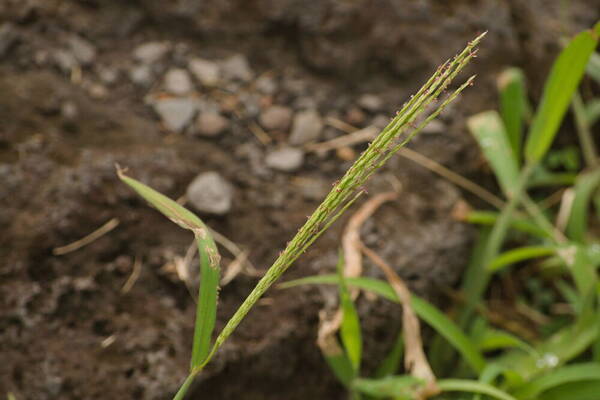
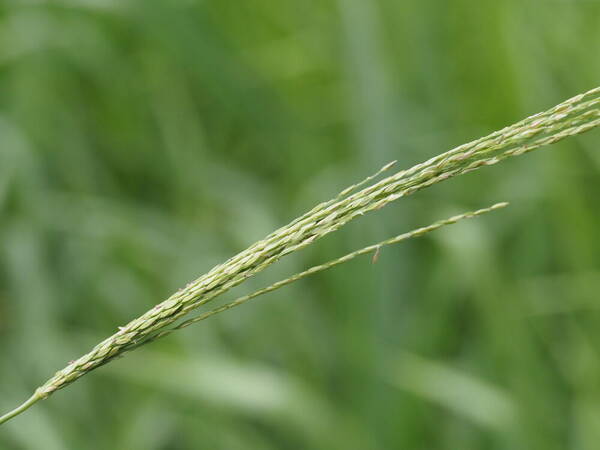
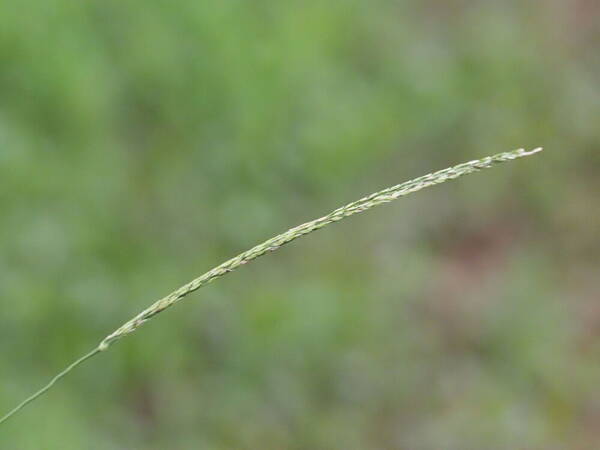
Plant
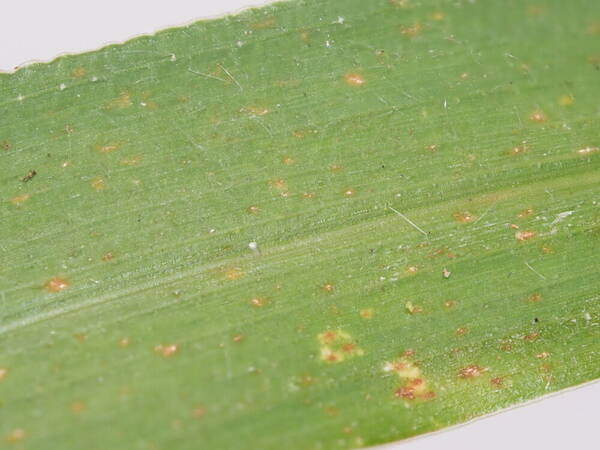
Habit
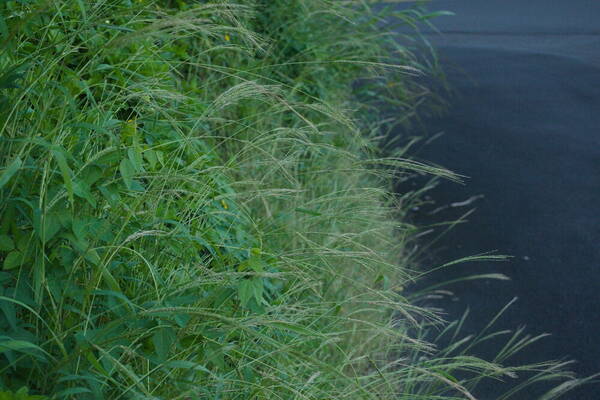
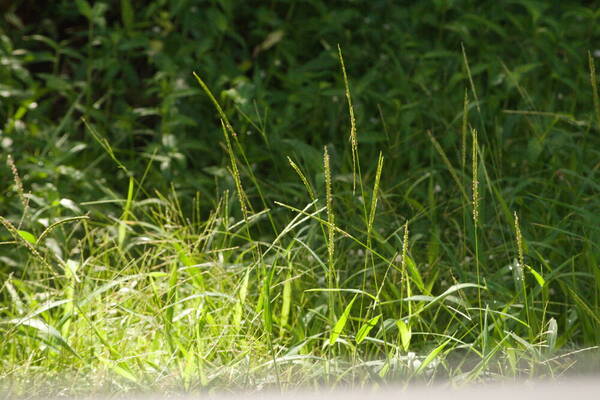
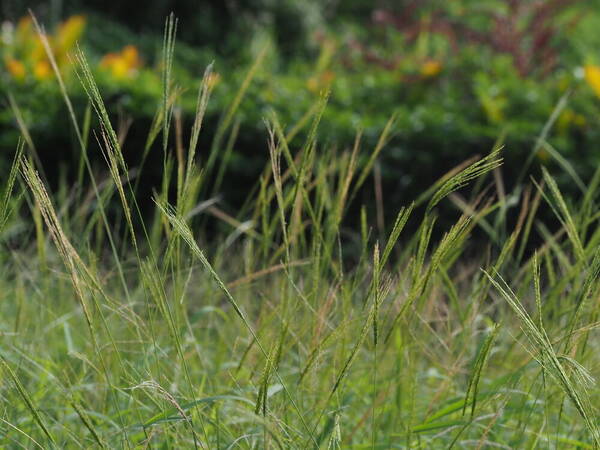
Spikelets
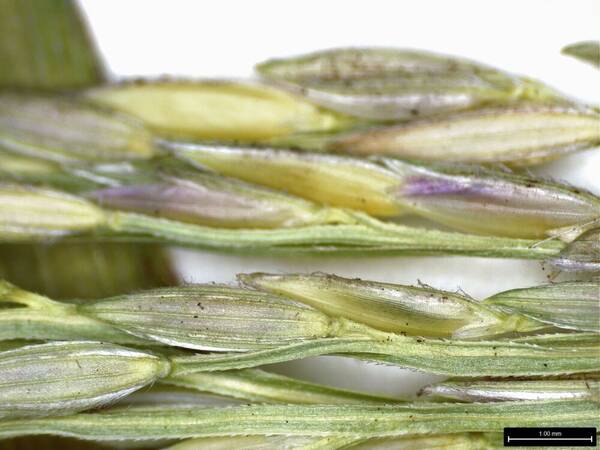
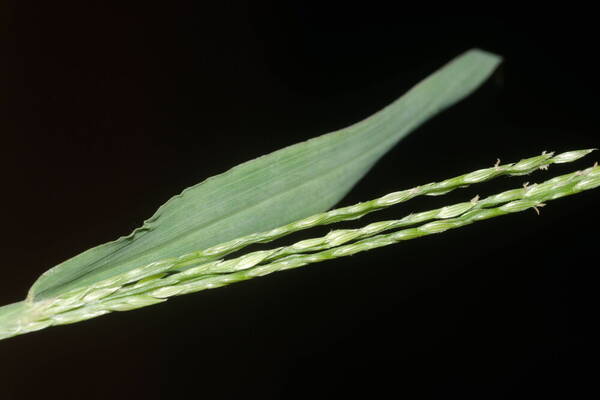
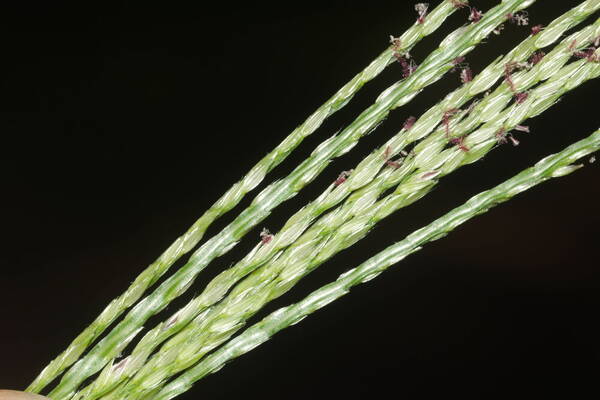
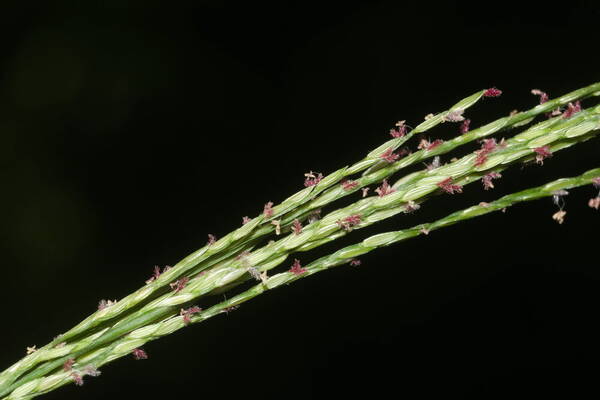

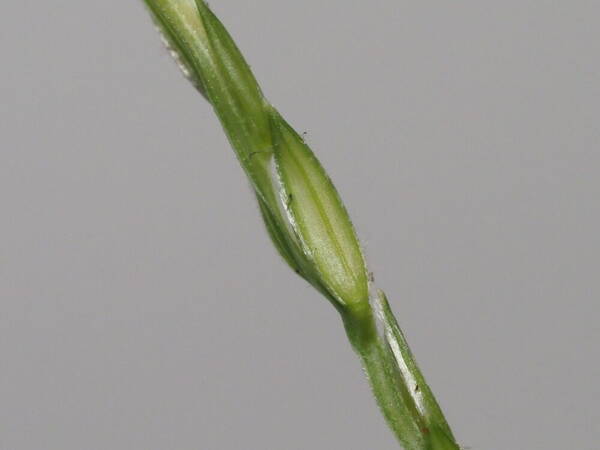
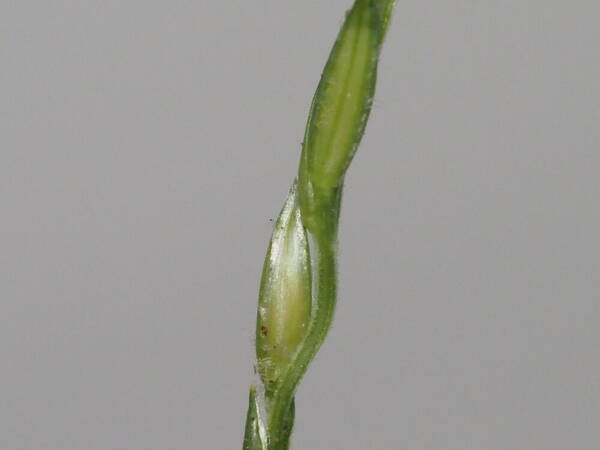
Node
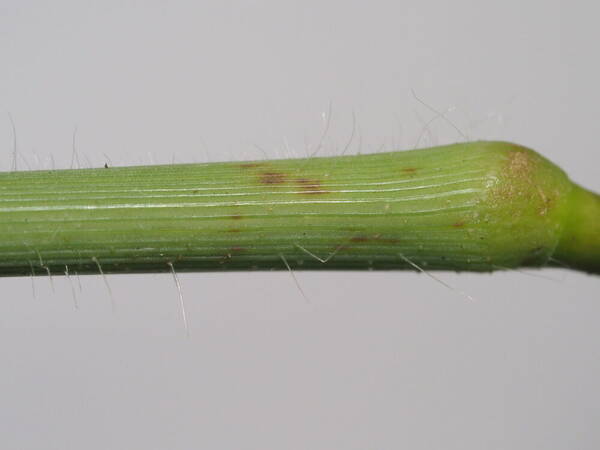
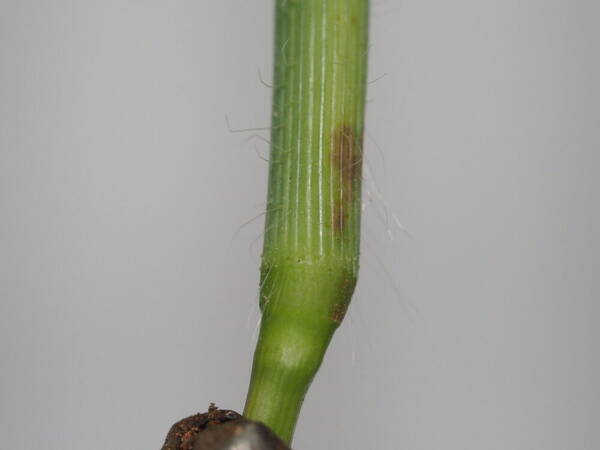
Description
Annual; culms 20–80 cm. high, geniculately ascending from a decumbent base. Leaf-blades broadly linear to lanceolate, 3–25 cm. long, 3–12 mm. wide. Inflorescence of 3–15 racemes arranged on a common axis 1–6 cm. long, or digitate in the smaller plants; racemes 4–15 cm. long, the spikelets binate and overlapping by ± 2/3 their length on a narrowly winged triquetrous rhachis, this sometimes bearing a few long glistening hairs. Spikelets lanceolate to elliptic-lanceolate, 2–3 mm. long; lower glume absent or very obscure; upper glume 1/8–1/4 as long as the spikelet, oblong or triangular, 0– to sub–3-nerved; lower lemma as long as the spikelet, 7-nerved, the nerves evenly spaced or with a wide central interspace, appressedly or silky pubescent, rarely with a ciliate frill, very rarely with stiff bristles; fruit lanceolate, grey to yellowish brown.
(Description source: Clayton, W.D. & Renvoize, S.A. 1982. Flora of Tropical East Africa. Gramineae (Part 3). A.A. Balkema, Rotterdam. 448 pp. )
Plants of indefinite duration. Culms to 120 cm tall, bases long-decumbent and rooting at the lower nodes. Sheaths with papillose-based hairs; ligules 2.5-3.5 mm; blades 4-28 cm long, 4-12 mm wide, scabrous, usually with some scattered papillose-based hairs on the base of the adaxial surfaces, sometimes with hairs all over. Panicles with 3-11 spikelike primary branches in 1-several whorls, rachises to 6 cm; primary branches 5-15 cm, axes wing-margined, wings more than 1/2 as wide as the midribs, lower and middle portions bearing spikelets in unequally pedicellate pairs; secondary branches absent; shorter pedicels 0.3-0.8 mm; longer pedicels 1.7-2.7 mm. Spikelets 2.4-3.5 mm, homomorphic, ovate. Lower glumes absent or to 0.1 mm; upper glumes 0.2-1.3 mm, 1/6 - 1/3 as long as the spikelets, 1-3-veined, margins and apices with appressed, white hairs about 0.5 mm, truncate or bilobed; lower lemmas (5)7-veined, veins smooth or scabrous only over the distal 1/3, unequally spaced, margins and lateral intercostal regions silky-ciliate; upper lemmas tan or gray when immature, brown at maturity, acuminate; anthers 0.6-1.3 mm. 2n = 70, 72.
(Description source: Barkworth, M.E., Capels, K.M., Long, S. & Piep, M.B. (eds.) 2003. Flora of North America, north of Mexico. Volume 25. Magnoliophyta: Commelinidae (in part): Poaceae, Part 2. Oxford University Press, New York. 783 pp http://floranorthamerica.org/Digitaria_setigera )
Annuals; culms geniculately ascending from a decumbent base, 20-80 cm tall. Sheaths sparsely to densely stiff-pubescent; ligule 1.5-3 mm long, truncate, erose; blades linear to lanceolate, 3-25 cm long, 3-12 mm wide, both surfaces moderately to densely stiff-pubescent. Inflorescences composed of 3-15 racemes arranged on a common axis, 1-6 cm long, or digitate in smaller plants, racemes 4-15 cm long; spikelets in pairs, imbricate, rachis trigonous, winged, sometimes with a few long, glistening hairs; spikelets lanceolate to elliptic-lanceolate, 2-3 mm long; (first glume absent or less than 0.3 mm long, second glume 1/8-1/4 as long as the spikelet, oblong or triangular, 0-3-nerved, margins usually arachnoid pubescent; first lemma as long as the spikelet, 7-nerved, the nerves evenly spaced or with a wide central interval, appressed pubescent or silky pubescent, rarely ciliate or with stiff bristles; palea as long as lemma. Caryopsis gray to yellowish brown, lanceolate, glabrous. [2n = 18, 36, 54, 72.]
(Description source: O’Connor, P.J. 1990. Poaceae, pp. 1481–1604. In: Wagner W.L., Herbst D.R. & Sohmer S.H. (eds.)., Manual of the flowering plant of Hawaiʻi. Vol. 2. University of Hawaii Press & Bishop Museum Press, Honolulu )